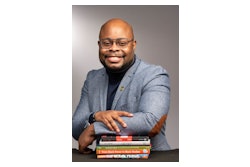In 2020, after the horrific murder of George Floyd, the world responded with declarations condemning racial violence and oppressive systems. Similarly, many university administrators, including education deans, disseminated statements illustrating their commitment to diversity, equity, and inclusion (DEI). Four years later, the pendulum has shifted. Republican legislators have waged anti-DEI movements, claiming myths that DEI efforts are ineffective, violate free speech, and are discriminatory towards white students. The Chronicle of Higher Education has even instituted a DEI Legislation Tracker to track anti-DEI higher education policies.
 Dr. Annice Fisher
Dr. Annice Fisher
As AU SOE’s Antiracist Pedagogy Scholar and Dean, we’ve learned much about sustaining organizational change amid polarization. Below we offer six lessons learned.
1. “Walk” the Antiracist Vision
A recent Google search of “2020 diversity and antiracist statements for schools and colleges of education” returned a healthy list of statements. However, most statements lacked concrete action plans for creating inclusive and antiracist learning settings. Sociologists Winn and Ziff (2022) claim that despite institutions’ best intentions, “a statement of words will not bend institutional structure. Only specific, concrete actions have the potential to produce change.” McNair et al. (2020) refer to this phenomenon as a “failure to turn equity talk into equity walk.”
At AU SOE, we have attempted to “walk the talk.” As a first step, we created a collective antiracism vision and used it to guide our actions. We’ve integrated antiracism and DEI into every school process, including all academic programming. Today, our antiracism actions are posted on our website.
2. Positionalities Matter
To create an antiracist learning community, it’s important to stress that each community member can participate by aligning their position and responsibilities to the school’s DEI commitment. Each bullet point in one’s job description is an opportunity to use “positional authority” to implement antiracist policies and processes. For instance, at AU SOE, the dean issued a school-wide call to action and took responsibility for securing funds to support activities for staff and faculty. We contracted with external sources to support the faculty’s interest in developing antiracist syllabi and course content. The dean also funded an inaugural antiracism pedagogy scholar to focus on faculty and staff capacity building, among other actions. Faculty councils and program directors also have the leverage to drive antiracist change, with initiatives like adding antiracism-related questions to student evaluations and program curricula review processes. In addition, the tenure and promotion process was modified to include DEI efforts by faculty. Empowering all members of the school community to act is crucial for driving culture change.
3. Honor our Realities
 Dr. Cheryl Holcomb-McCoy
Dr. Cheryl Holcomb-McCoy
4. Intentionally Build Access Pathways
Centering antiracism requires diverse voices. As such, we ensured that all pathways (e.g., faculty searches, admissions) to join our community were reviewed and modified to align with our vision and values. As a result, our school’s enrollments and demographics changed. Student enrollments have increased for most of our programs. Also, full-time faculty are more representative of our student body. Faculty racial diversity shifted over four years from 23% to 41% for Black faculty, 0% to 2% for Latino faculty, and 4% to 6% for Asian faculty. Efforts are ongoing to increase the overall diversity of our community. Additionally, we aim to answer the call to diversify the teacher pipeline through efforts such as our Teacher Pipeline Project and partnership with the City Teaching Alliance.
5. Build Capacity to Teach and Lead for Antiracism
Akin to Dr. King’s last call to action, we knew we couldn’t “be true to what we said on paper” without providing resources to build faculty and staff capacities to bring antiracism to life. The Antiracist Pedagogy Scholar offered faculty a robust professional learning program. We offered a variety of learning opportunities. From offering a 3-part series on disrupting racism in the classroom to antiracism program audits, we offered strategies for dismantling racism at the individual, cultural, and structural levels. Confidential one-on-one antiracism coaching afforded faculty and staff private space to grow at their own pace. And, at the request of faculty and staff, we redefined our DEI committee to an Equity, Justice, and Community committee.
6. Tell Our Stories
We have learned that storytelling is powerful in shifting narratives for transformative change. Both research and lived experience consistently show that stories and language play a significant role in shaping our views of the world and, ultimately, the policies we support. Shifting “narratives” is essential to our vision as an antiracist school. We have invested in marketing and media to showcase our varied community narratives steeped in antiracist perspectives.
In sum, leading for justice is challenging yet necessary. James Baldwin’s (1962) words ring true for us.
“Not everything that is faced can be changed, but nothing can be changed until it is faced.”
Dr. Annice Fisher is an antiracist pedagogy scholar at American University, School of Education.
Dr. Cheryl Holcomb-McCoy is Dean and Distinguished Professor at American University, School of Education.


















